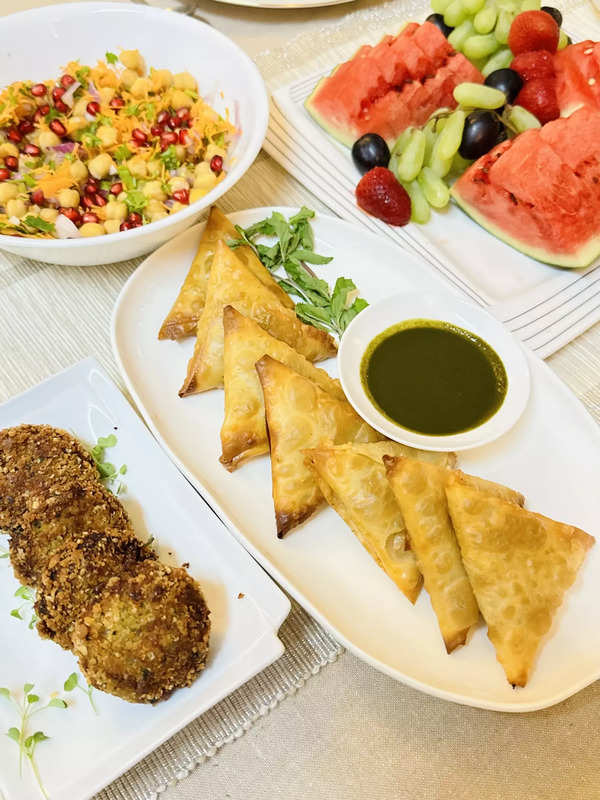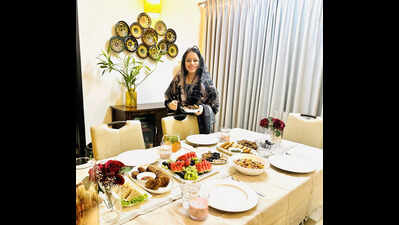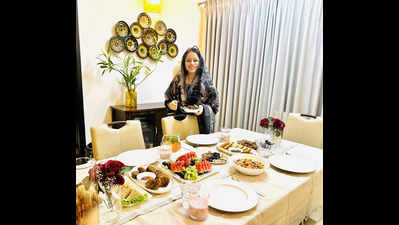Ramadan Reflections | Bengaluru News

Ramadan, the sacred month of fasting for Muslims around the world, is a time for abstinence, not just from food and drink but also from harmful speech and actions, idle pursuits and desires. A time of spiritual introspection, enhanced prayers and increased acts of
(obligatory charity), encouraging individuals to observe their intentions, actions and relationship with the Almighty, as well as others. One of the odd nights, in the last ten nights of Ramadan, is the auspicious
Laylat al-Qadr (Night of Decree, Destiny or Power).
This night is considered the holiest night in the Islamic calendar and is believed to be when the holy Quran’s first verses were revealed to Prophet Muhammad.
My childhood memories of spotting the Ramadan crescent moon was with my father – standing on our rooftop as the sun would sink below the horizon, and our eyes scanning the dusky sky for that faint silver arc! After a thorough scan of the sky, he would point to the West confirming the start of Ramadan, while I would squint in that direction and concur. The moment felt revered, like a quiet blessing. From the following dawn onwards, we wake up for
Suhoor (pre-dawn meal)
and observe the fast.
As the sun sets with the call to
Maghrib
(evening prayer), the
(post sundown meal to break the fast), is looked forward to – with the family, or at community centres and mosques, where people from all backgrounds gather to break their fast and offer prayers in congregation. Traditionally the fast is broken with a date and water or a drink, fruit and savoury, but families have their personal favourites. Some relish fried snacks, while others savour soups and salads. The key is to nourish the mind with
Shukr
(gratitude), the body with nutrition.

Iftar delights rooted in tradition
Every year, when Ramadan approaches, apart from all rituals, my family eagerly waits for one thing – the return of my special chicken cutlets and crispy samosas at
Iftar
. It all started years ago when, as a novice, I tried making cutlets on a whim, mixing chicken (the Malabar style) with potatoes, and my mother’s special blend of spices, and of course a touch of love. Little did I know, more than a decade later, they would become an unshakable
Iftar
staple in our home. The significance of its aroma around this time of the year is delightfully put across by my husband, Shihab, who says, ‘the house smells of Ramadan’! The status of my once just-another-item-on-the-table, now gets IG worthy looks during
Iftars,
making them disappear within minutes of breaking the fast.
The beauty of all this food is that we share it with others, especially the needy. A warm reminder that Ramadan isn’t just about fasting, but also about the little joys we share as a family – the laughter, the stolen bites, and the love tucked into each imperfectly perfect piece of cutlet or the golden triangle.
Although I’ve reminisced about my family’s little joy, in essence,
Iftars
are brief, after which it’s time for prayers, and recitation of the Quran and
Taraweeh (a special voluntary night prayer, performed only during Ramadan).
Some spend all night in
Ibaadah (worship)
, but during the non-fasting hours, hydration and proper nutrition has to be the key to good health for the remaining days.
The holy month of Ramadan ends by making its way for
(festival of breaking the fast). And for those who’ve taken their lessons well, they continue with the good deeds.
Nowfee Ebrahim lives in HSR Extension
Iftar Specials from Malabar
In my experience through travel, I’ve explored eating and making many kinds of snacks from multiple regions and cultures, but we are always drawn to our traditional native Malabar specials like chicken cutlets and samosas (spiced savouries),
Elanji
or love letters (thin crepes with sweet coconut or a modernised fruit filling); and the not-to-miss
Unnakkaya
(a specialty made of mashed plantain, stuffed with a choice of filling and shaped like a spindle, fried to a caramelised delight);
Kaipola
(an easy and sweet cake-like preparation made with plantains, eggs, nuts and raisins), the same made in a savoury version resembling a meatloaf and called an
Erachipola
. The
Thari Kanji
(a light semolina and milk drink) and
Nombu Kanji
(a warm porridge made for dinner) are also staples during this period. These items are meant to be consumed in moderation along with other nutritious food and drinks.

















